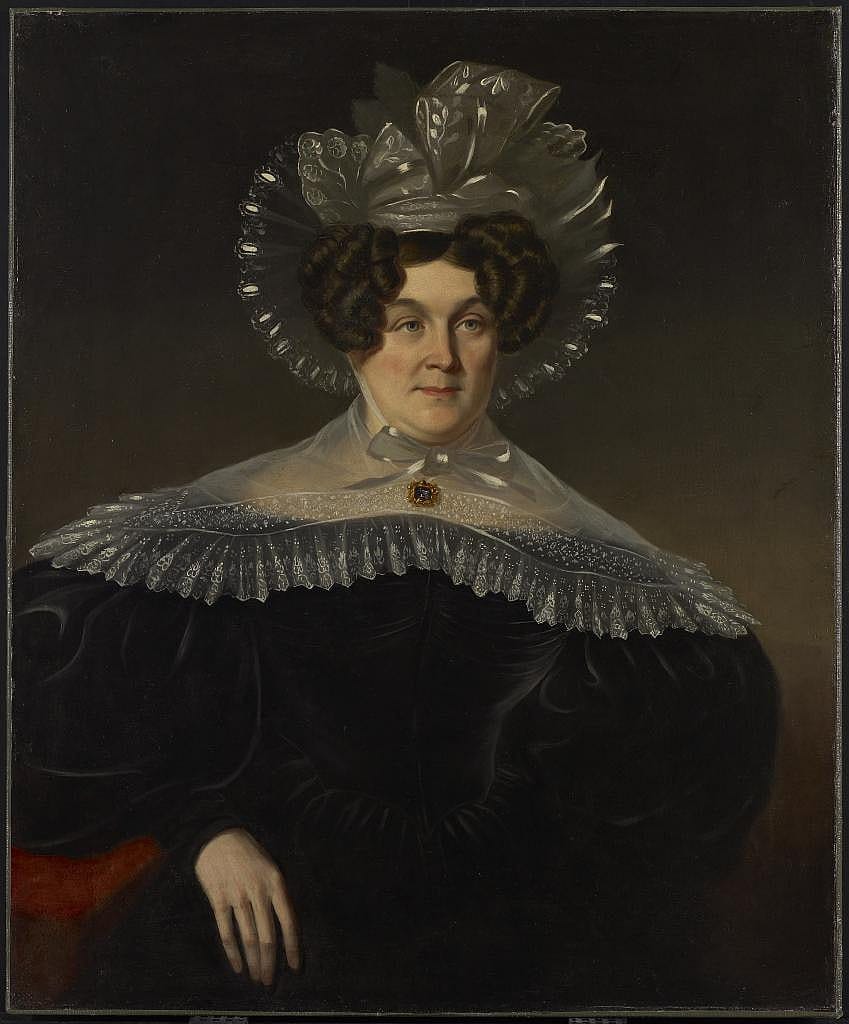
John Mix Stanley: Portrait Painter
The practice of itinerant painting was popular in the United States in the 18th and 19th centuries. Artists would travel through urban and rural areas seeking commissions from wealthier families and prominent members of society. These portraits would often hang in the household’s parlor room indicating to guests the sitter’s gentility and position in society.

John Mix Stanley began painting and drawing at an early age in Buffalo, New York. In 1828, he was placed into an apprenticeship in Naples, New York under a wagon maker. During his four-year apprenticeship, he was said to have bought canvases to practice painting in his spare time, scraping off and reusing the material with each new composition to save money. In an effort to pursue his goal of painting full time, he left for Buffalo to begin work as a sign painter. Upon his father’s death in 1834, Stanley moved to Detroit, thus beginning his journey as an itinerant artist. While there, Stanley gained the attention of artist, James Bowman (1793–1842), an itinerant portrait painter out of Pennsylvania who had trained in Europe under Sir Thomas Lawrence. Bowman was a widely traveled artist, having moved around Canada and the Eastern United States in the 1830s and 1840s painting the gentry in cities such as Boston, Montreal, Toronto, and Detroit (figures 1, 2).

The Detroit Free Press later wrote of their first meeting, “While walking by the offices of the Free Press, Bowman admired a portrait of Benjamin Franklin on a sign over the newspaper’s door. He enquired of the sign’s creator and found out that it was one John Mix Stanley. After locating Stanley, Bowman reportedly urged him to the field of portraiture with the flattering observation that ‘the painter of the head of Franklin should quit house and sign painting and devote himself to studying the higher art of portrait painting.’”[1]
Some of Stanley’s most striking portraits during his early period are of children. His dedication to likeness as well as to symbolism, in the form of props and animals that surround the sitters, creates a timeless and charming look at the era.
In 1842, Stanley journeyed to Indian Territory in Oklahoma in order to paint portraits of American Indians for an Indian Gallery he was assembling. He traveled around the area for several years working on his gallery while painting portraits of families on commission. One of those commissions came from the family of John Golden Ross, a trader out of Arkansas, who married a Cherokee woman. The portraits of his two younger children, Eleanora and Lewis, are charming examples of Stanley’s early portraits (figures 3, 4).

Both children are set within soft landscapes and are elegantly dressed. Eleanora holds a sketchbook on her lap opened to a beautiful watercolor signed “Stanley.” John Mix Stanley was known to give art lessons to interested pupils, one of whom may have been Eleanora. The opened drawing signifies Eleanora’s refined upperclass tastes and her interest in art. The portrait of Lewis shows him holding a bow and arrows, while a bunny, patiently sits in his lap. The bow and arrows perhaps indicated Lewis’ young prowess as a hunter, and a future provider. The rabbit could have been a pet, but may also be a symbol of Lewis’ gentle nature.

Another striking portrait titled, Boy With Birds, ca. 1846 is believed to be set in Santa Fe when Stanley was traveling through the Southwest with William Emory and General Stephen Kearny as a topographical artist (figure 5). The boy in the portrait is thought to be Luisiano Baca, the son of Jesus Maria Baca who operated the one of the major printing presses in Santa Fe. The addition of a newspaper in his hat, partially titled “Freedom” with the date 1842 is thought to correspond both to the boy’s father’s occupation as well as to the freeing of Santa Fe from Mexican rule during General Kearny’s march to California with his Army of the West.

[1] Julie Schimmel, “John Mix Stanley and Imagery of the West in Nineteenth-Century American Art.” Ph.D. diss., New York University, 1983, pg. 16-17.
Written By
Emily Wilson
Emily Wilson is the curatorial assistant at the Whitney Western Art Museum. She is a big fan of contemporary art and taxidermy. Living in the West has made her appreciate the region for its artistic and aesthetic draw.











